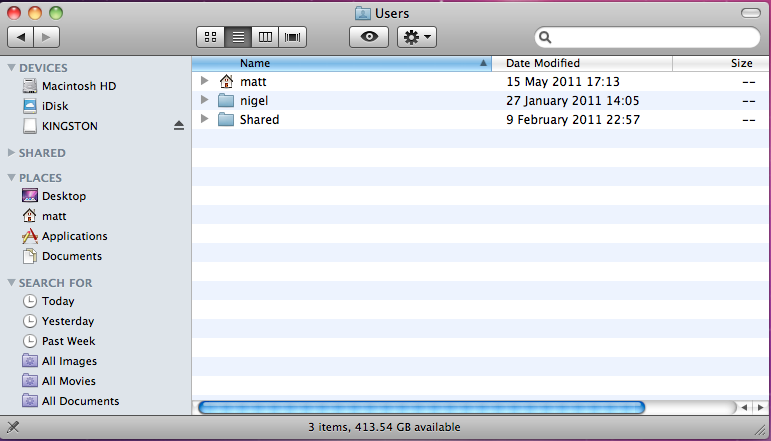
How to...
Mac OS X: Home directory, Applications and Utilities Folders
Home directory
The Home Directory is where you keep all your own personal files. These are owned by you alone, and other users of the Mac cannot access them. There are exceptions to this, but the general rule is that if you use the standard list of folders that are created when the account is set up, listed below, these and their contents are not available to others users. The standard set of folders that are private to your account are as follows:
- Desktop
- Documents
- Library
- Movies
- Music
- Pictures
The other two folders - Public and Sites are shared folders and should not be used for storing personal files. If you create other folders at this level of your home directory they will not by default be private so it is advisable to use the list above for storing files. The Public Folder is a special folder with a "Drop Box". The Drop Box is a folder that other users can see and can "drop" files into for your own use. They cannot however see the contents of the "Drop Box".
The image below shows an example of the contents of the users folder where there are a couple of accounts. The "house" icon shows the currently 'logged in' home directory for user "Matt". In the sidebar at the left are the set of default folder shortcuts for the current home directory.

Your personal preferences are stored in your home directory, e.g. your web browser bookmarks, and address lists. These are mainly located in the Library folder of your Home directory. Normally you should not need to access the contents of this directory.
Applications folder
The Applications folder is where all the Macs software and applications are stored. These include applications that are bundled with the Mac, e.g. AppleWorks, iLife, Mail, TextEdit, QuickTime. The majority are applications that have been installed and pre-configured for you by the Macintosh System Administrator.
A list of software that is installed (some of which is licensed only for use by students and staff of the University of Sussex) is available at: http://www.sussex.ac.uk/its/services/programsandsoftware/software/review/mac1011
Utilities folder
This is where some of the more complex system configuration software is located. It is unlikely that you will need to access many of these with the exception of the following
Grab
A utility that you might find useful is Grab, which allows you to do screenshots, and grab areas of the screen as .tiff files.
Printer Setup Utility
This application is used to locate and configure local and network printers. You should not need to use it however as the network printers in ITS users area are all pre-configured for your ease of use. The available printers are A4 black and white, A4 colour, A4 transparency, and A3 colour.
Terminal
Another is Terminal, which gives you a command line view into the unix operating system. Using Terminal is something that only people knowledgeable about unix should ever attempt to try. It is a tool primarily for use by System Administrators and programmers. In addtion to Terminal there is also X11.app. This is the builtin X windowing application from Apple.
created on 2010-01-01 by Soo Lyth
last updated on 2011-07-19 by Matthew Wall